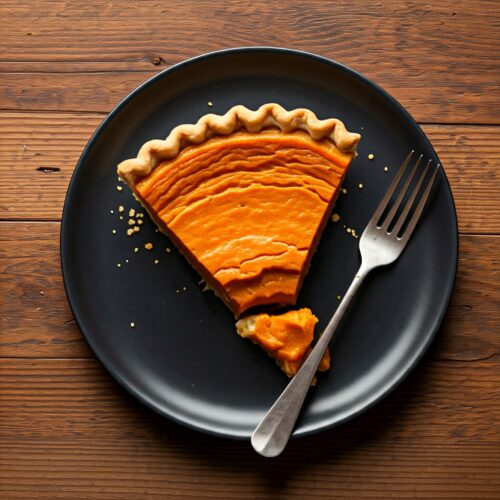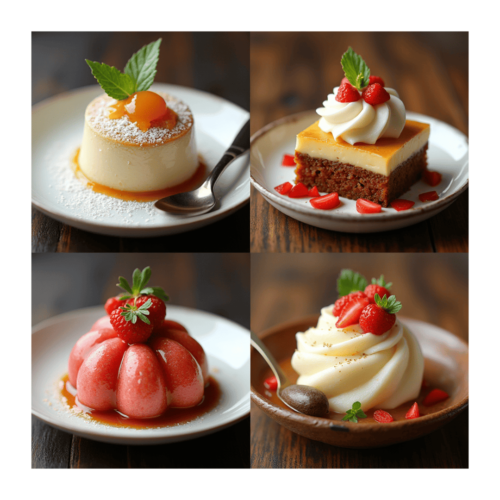Table of Contents
Introduction: Why Choose Greek Yogurt for Your Cheesecake?
When it comes to crafting a cheesecake that delights both the palate and the health-conscious mind, Cheesecake with Greek Yogurt emerges as an extraordinary choice. This creamy, tangy ingredient not only adds a delightful twist to traditional recipes but also offers a wealth of health benefits that are hard to overlook. By substituting cream cheese with Greek yogurt, you transform your favorite dessert into a lighter, more nutritious option.
Greek yogurt is celebrated for its high protein content and probiotics, which contribute to better digestion and overall wellness. This makes it an ideal healthy dessert ingredient for those looking to indulge without compromising on nutritional value. Moreover, using Greek yogurt in your cheesecake results in a texture that is wonderfully smooth while being significantly lower in fat than its cream cheese counterpart.
Embrace this versatile ingredient and enjoy the guilt-free pleasure of a lighter cheesecake option that satisfies both your sweet tooth and your commitment to well-being. With Greek yogurt as part of your culinary repertoire, every slice becomes an opportunity for delicious indulgence with added health benefits—a true win-win!
The Perfect Ingredients for a Greek Yogurt Cheesecake
Creating a Greek yogurt cheesecake is a delightful way to enjoy a classic dessert with a healthier twist. The secret lies in the perfect blend of ingredients that not only enhance flavor but also offer nutritious benefits. Here’s an informative guide on crafting this delectable treat.
To start, let’s focus on the ingredients list. Greek yogurt serves as the star component, offering a creamy texture while significantly reducing fat content compared to traditional recipes. This substitution makes it an excellent cream cheese alternative, providing all the richness without compromising on taste.
When assembling your Greek yogurt cheesecake recipe, consider incorporating other healthier cheesecake ingredients like honey or maple syrup as natural sweeteners instead of refined sugar. These not only add sweetness but also bring unique flavors to your dessert.
For the crust, opt for whole-grain options such as oats or almond flour mixed with a bit of coconut oil or butter for binding. This swap enhances nutritional value and beautifully complements the tangy notes of Greek yogurt.
Finally, don’t forget to add fresh fruits like berries or lemon zest into your mixture or as toppings. These elements provide vibrant colors and refreshing tastes that elevate your cheesecake experience.
By carefully selecting these ingredients, you can create a delightful Greek yogurt cheesecake that satisfies cravings while being mindful of health-conscious choices.
Step-by-Step Guide to Making a Greek Yogurt Cheesecake
Cheesecakes are a delightful dessert, and incorporating Greek yogurt into your recipe can make it both delicious and slightly healthier. Here’s a step-by-step guide to making a Greek Yogurt Cheesecake that is sure to impress your family and friends.

**Step 1: Gather Your Ingredients**
For the crust, you’ll need about 1 ½ cups of graham cracker crumbs, ¼ cup of sugar, and 5 tablespoons of melted butter. For the cheesecake filling, gather 3 cups of plain Greek yogurt (preferably full-fat for creaminess), two packages of cream cheese (softened), ¾ cup of sugar, three large eggs, one teaspoon of vanilla extract, and the zest from one lemon for an added zing.
**Step 2: Prepare the Crust**
Preheat your oven to 325°F (160°C). Mix the graham cracker crumbs with sugar in a bowl. Stir in the melted butter until all crumbs are moistened. Press this mixture firmly into the bottom of a springform pan to form an even layer. Bake for about ten minutes until set.
**Step 3: Make the Filling**
In a large mixing bowl, beat together the softened cream cheese and sugar until smooth. Add in the Greek yogurt and continue blending until well combined. Next, add eggs one at a time while mixing at a low speed to avoid over-beating; this prevents cracks during baking. Finally, blend in vanilla extract and lemon zest.
**Step 4: Assemble and Bake**
Pour your creamy filling over the cooled crust in your springform pan. Smooth out any bumps on top using a spatula for an even surface. Place your cheesecake gently into the preheated oven’s center rack—bake for around one hour or until the edges appear set but the center slightly jiggles when moved.
**Step 5: Cool Gradually**
Once baked thoroughly through golden perfection—turn off the heat source—but leave the cake inside with the door ajar, allowing a slow cooling process and preventing sudden temperature drop-induced cracks formation, often seen otherwise! Once cool enough touch—remove from the oven entirely, continuing rest room temperature further two hours minimum before refrigerating overnight ideally achieving firm texture desired overall!
Enjoy serving slices of chilled topping, your favorite fruit syrup choice, completing the perfect decadence taste experience on every occasion!
Toppings and Variations to Enhance Your Cheesecake Experience
Cheesecake lovers, rejoice! The world of cheesecake is a vast and delicious landscape just waiting to be explored. Whether you’re a purist who adores the classic New York-style cheesecake or an adventurous soul eager to try something new, there are endless toppings and variations to elevate your cheesecake experience to new heights.
Imagine the luscious creaminess of your favorite cheesecake paired with the vibrant burst of fresh berries. Strawberries, blueberries, raspberries—each adds its own unique sweetness and tang that perfectly complements the rich texture of the cake. For those who crave a touch of indulgence, a drizzle of decadent chocolate ganache or caramel sauce can transform each bite into pure bliss.
But why stop there? Dive into the world of nuts for added crunch and flavor complexity—think toasted almonds, pecans, or walnuts sprinkled generously over your slice. And for those who love a bit of spice in their life, consider adding a hint of cinnamon or nutmeg to your crust for an unexpected twist.
Feeling adventurous? Experiment with different bases like Oreo cookie crusts or ginger snaps to bring out unique flavors that will tantalize your taste buds. Or infuse your cheesecake with exotic flavors like matcha green tea or espresso for an unforgettable culinary journey.
The beauty of cheesecake lies not only in its irresistible taste but also in its versatility. So go ahead—get creative with toppings and variations that reflect your personality and palate preferences. Each slice is an opportunity to craft something truly extraordinary. This masterpiece celebrates both tradition and innovation in every delicious bite!
The Nutritional Benefits of Using Greek Yogurt in Baking
When it comes to creating delicious yet nutritious desserts, Greek yogurt is a game-changer. Incorporating Greek yogurt into your baking not only elevates the taste but also boosts the health benefits of your treats. Unlike traditional dessert ingredients that can add unwanted calories and fats, Greek yogurt offers a rich source of protein, making it an excellent choice for those looking to whip up high-protein desserts.
One of the standout advantages of using Greek yogurt in baking is its ability to create lower-calorie desserts without sacrificing flavor or texture. This creamy ingredient helps achieve the same moistness and richness in cakes, muffins, and even cheesecakes while significantly reducing calorie content. When you compare a cheesecake made with regular cream cheese to one crafted with Greek yogurt, the nutritional differences are striking—less fat and fewer calories without compromising on taste.
Moreover, Greek yogurt is packed with probiotics that not only support gut health but also add a unique twist to traditional recipes. While it’s common knowledge that probiotics are beneficial for digestion when consumed raw, their resilience during baking means you can still enjoy some digestive perks even after your dessert has been cooked.
In summary, swapping out heavier ingredients for Greek yogurt in your baking endeavors paves the way for guilt-free indulgence. It transforms classic treats into high-protein powerhouses and lets you enjoy delectable lower calorie desserts with added probiotics—a win-win scenario for both taste buds and health-conscious bakers alike.
Troubleshooting Common Issues When Baking with Greek Yogurt
Baking with Greek yogurt can be a delightful way to enhance your favorite recipes, but it does come with its own set of challenges. Understanding these common baking problems and solutions can transform your kitchen experience from frustrating to fulfilling.
One of the most frequent issues bakers face is cracks in cheesecakes, which often occur due to overmixing or sudden temperature changes. To prevent cracks, ensure you’re incorporating the Greek yogurt gently into your batter—overmixing can include too much air, leading to an uneven rise and those dreaded fissures. Additionally, employing a water bath during baking helps maintain a consistent temperature around your cheesecake, reducing the risk of cracking as it cools.
Another common hiccup is overly dense baked goods. When using Greek yogurt as a substitute for oil or butter, remember it has more moisture but less fat. This difference could result in denser treats if not balanced correctly. To counteract this, try combining Greek yogurt with a bit of oil or butter to retain moisture without sacrificing texture.
Lastly, when substituting Greek yogurt for other ingredients, consider its tangy flavor profile—it may subtly alter the taste of your dish. Adjust sweeteners or vanilla extract accordingly to ensure your baked goods remain deliciously balanced.
Armed with these baking tips and tricks, you’ll find that incorporating Greek yogurt into your recipes not only improves the nutritional profile but also opens up new dimensions of flavors and textures—all without turning baking into an unpredictable endeavor.
Conclusion: Make the Switch to a Healthier Dessert Choice Today!

As we wrap up our delicious journey through the world of healthier dessert options, it’s clear that making the switch is not only a treat for your taste buds but also a wonderful gift for your body. Embracing desserts that are both satisfying and nutritious can transform your culinary experiences into guilt-free indulgences. Imagine savoring the sweetness of naturally sourced ingredients, knowing each bite is nourishing you from the inside out.
From creamy avocado chocolate mousse to vibrant fruit parfaits bursting with flavor, these delightful alternatives promise to keep your dessert cravings in check without compromising on taste or quality. So why wait? Dive into this exciting adventure of creating and enjoying desserts that make you feel as good as they taste. It’s time to celebrate every moment with a little sweetness—your health will thank you! Let’s raise our forks to make joyful and delicious choices today!




Pingback: Delicious Low Sugar Dessert Recipes: Healthy and Guilt-Free Sweet Treats for Every Occasion